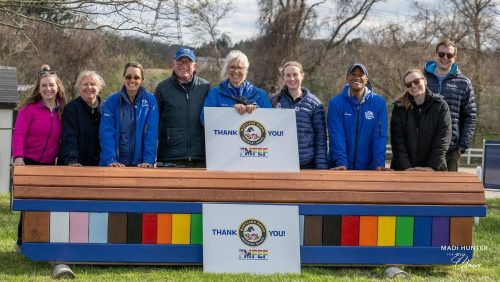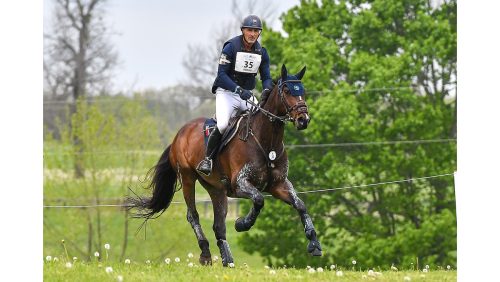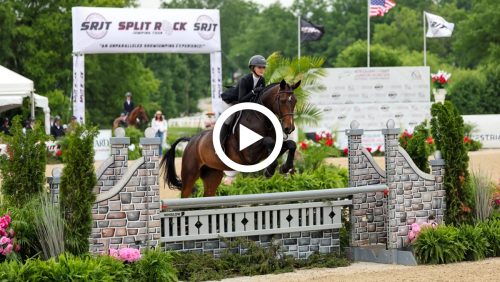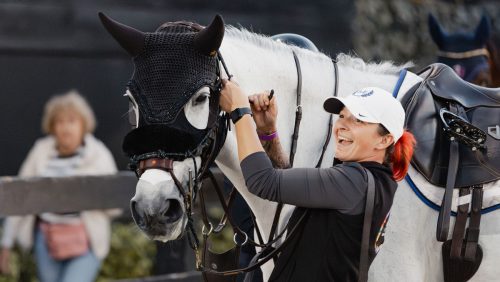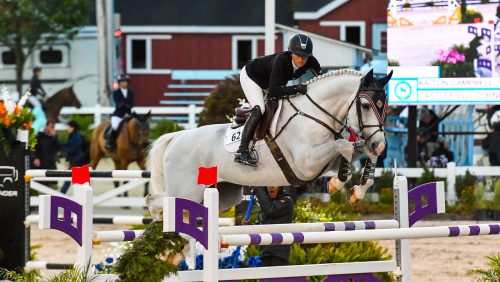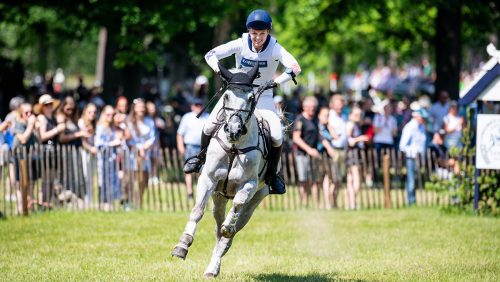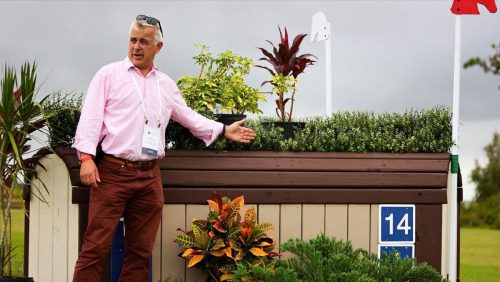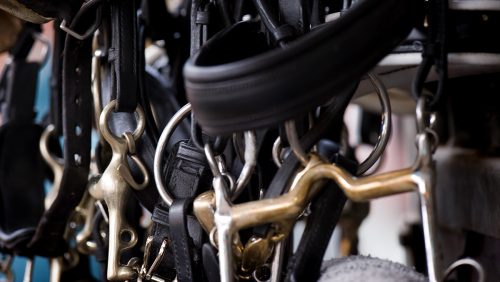For this week’s Throwback Thursday post, Edee Weigel reminisces about the quirky jumper who bucked everyone off, got shot and lived, and carried her over her first grand prix.
In 1976, my first horse had died from old age. While I was horseless, I worked for a hunter/jumper trainer in Southern California. I had plenty of nice horses to ride, but they were not the same as a horse of my own.
After a few years, I knew I was ready for a new horse. I wanted to find a high-quality young gelding that I could train for show jumping. I had been saving my money, so the horse hunt was on. In the spring of 1978, I heard of a big black 3-year-old colt that my contact said was “a little wild.”
People had ridden him a little bit, but they’d fallen off a lot! Some horse dealer had him in his back yard. I went to see “Night Life” (barn name Satin) at a small backyard stable. I was surprised to find a beautiful, well-made, 16.2-hand black gelding. He was a straight-legged horse with good movement and tons of impulsion. I tried him out and he seemed very mature for his age, so we trotted and cantered over a few low jumps with no problem.
I had him vetted and took him home and that is where the challenge began, as all that impulsion and energy were hard to control. I quickly discovered he really enjoyed bucking, in a rubber-ball bouncing motion, and he dumped me off a few times the first month. Satin could buck so high that when I didn’t fall off, I could see over the top of the barn roof.
I guessed then that was why such a “fantastic horse” was so affordable.
I was a strong rider and felt confident that if I could channel his energy I would have a great horse. So I learned that if I saddled him daily and let him trot around in the round pen to work off his cold back before I rode, it sure helped him relax.
Many days I would just ride him straight up the steep trails in Laguna Canyon behind my house, instead of heading for the arena. I probably rode him out in the hills for months before I ever took him to a trainer for a real lesson. I had to win him over and we just went forward and up the hill.
Satin and I developed a close relationship as we trotted and cantered along the trails and open fields, jumping over tree trunks, ditches and up and down natural banks. The ocean fog rolled in as we cooled out walking home along the eucalyptus tree-lined trails, filling the air with a spicy salt smell.
I lived across the street from where Satin was stabled, in Laguna Canyon, so it was easy to care for him myself, grooming, conditioning, and dreaming of the future.
After a year of steady improvement, I hauled Satin to some trainers for a few lessons and then to some schooling shows. It was obvious I had a top jumper prospect. He was so powerful and scopey he cleared every jump by at least two feet. In the three-foot pre-green classes I have several photos of him clearing the standards!
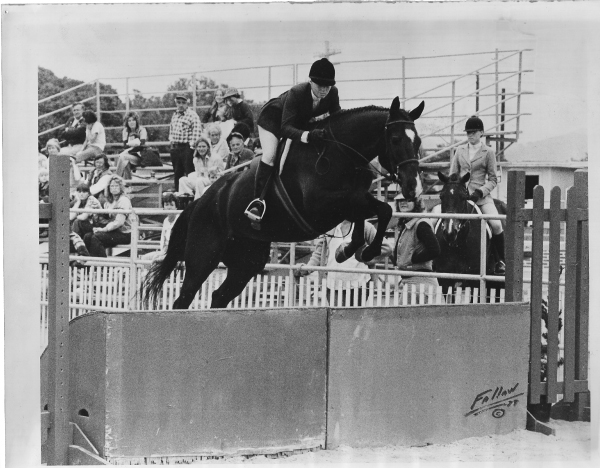
Bulletproof and Edee Weigel showing in the pre-green hunters in 1979. Photo by Fallaw
He was what the old time horsemen called “a freak.” In 1979 he was 4 years old and I hauled him to a few A-rated hunter/jumper shows that spring. The rides he gave told me I had been right about his potential. We didn’t place well in the hunters because he over-jumped and was hot, but I did not care because I dreamed of what the future would bring.
I rode in every jumper clinic that was held nearby. George Morris clinics were held in December at the Empty Saddle Club in Rolling Hills during the ‘70s , and we went every year. George got on my black horse and jumped him a few times; I held my breath that Satin would behave and he did.
ADVERTISEMENT
As the next year went on we started in a few low jumper classes. Satin was starting to really love showing and I hauled him out to as many shows as I could.
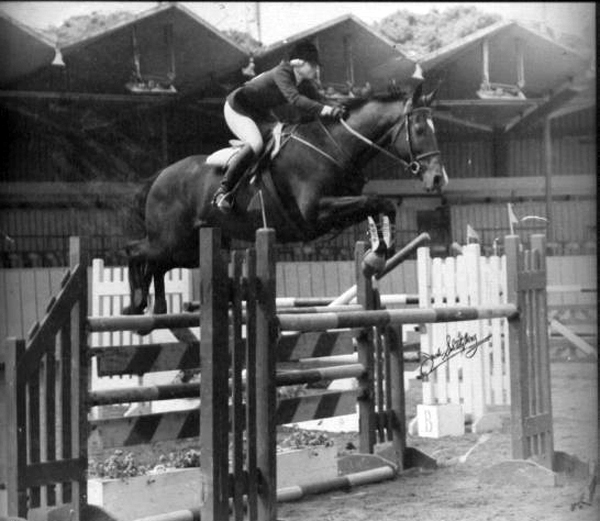
Bulletproof and Weigel showing in the ’80s.
Then in April of 1980, I was riding Satin up the Laguna Canyon trails behind my house. I heard some rifle shots being fired off in the distance. A few minutes later as we reached the top of the trail, I heard something buzz by my head, then my horse jumped and staggered to the right, as we heard several rifle reports from the hill below us.
Satin had been shot in his left side just behind my heel. I yelled, “Stop shooting!” several times and jumped off my horse. I was shocked to see blood; I covered the wound near his ribs with my hand as the blood ran through my fingers and down my arm.
My friends hurried down the trail on their horses back to the barn to call our vet, as I slowly lead Satin down the hill. I held steady pressure on his wound, and my only thought was to get him to the vet hospital. Just my luck, our local vet had a mobile phone and was at a nearby stable, so he raced to assist me. We got Satin stabilized and fairly comfortable. Luckily my truck and trailer were hooked up and had a full tank of gas; the clinic was 100 miles away. I was prepared for the worst. I did not know how long my horse could stand up. I was faint to think I would lose him. We took the dividers out of the trailer and the deeply bedded shavings were ready in case he became too weak to stand. We led Satin into the roomy trailer and turned him loose in case he had to lie down.
In a trance, I drove as quickly as I dared, arriving at the vet clinic in Temecula several hours later. I walked around to the back of the trailer, afraid at what I would find.
Ever the clown, Satin was standing up and looking out over the tailgate, enjoying the view of the world as it passed him by. Dr. Ommert took a long look at him and was very quiet. I held my breath as I waited to hear the verdict. I assumed he would operate to take the bullet out!
But Dr. Ommert was a very experienced horseman and he said he believed the horse had a greater chance of surviving this injury if we left the smaller .22-caliber bullet alone, and just treated him for possible infection and shock.
With a heavy heart I led Satin to the clinic stall and took off his halter. He walked around and sniffed at the feeder then turned and looked at me. I thought it was the last time I would ever see him. I numbly drove home, pulling an empty trailer.
I went to the stables to ride my other horses in training the next day, and there was his stall, empty like the hollow place in my heart. I hung over the door and mourned the loss of my dream.
A week went by with daily phone reports from the vet. Dr. Will said that my horse was gravely ill, with a fever spiking at 106. Satin was standing up in his stall with his head down and would not eat or drink. However, his body was doing a good job of fighting for his life with the help of the treatments. The vet said, “As long as he’s standing up there is hope.” My horse was tough—I knew this only too well—and that fierce determination gave him the willpower to live.
On the eleventh day Dr. Ommert called to say I could come pick up my horse!
“He’s out on the front pasture, grazing right now!” Dr. Ommert chuckled as he recalled how he knew that Satin was going to make it: “A few days ago, I went to put the tube up his nose and he reared up and tried to strike me!”
I laughed, as I knew that my horse was just a little on the rank side.
ADVERTISEMENT
I drove back to Temecula with a happy heart this time, so different from that drive of almost two weeks before. As I drove in I could see Satin, happily grazing in a green paddock. He looked like a scarecrow, skinny from his ordeal, his black coat harsh and ragged, but he was alive and he was going to be OK.
I rushed over to his paddock and he nickered at me as if to say, “Hey, where have you been?” I hugged his neck and ran my hands over him. The hole was still there but scabbed over. When it healed, there was a tiny patch of white hair left to remind me.
After a few more months off, I started him back in training. The Laguna Canyon trails never felt better as he effortlessly climbed them. As he gained in condition, I went back to taking jumping lessons and he stayed healthy, jumping with bounding joy over every course. I kept training him, and soon he was jumping the preliminary courses again with ease.
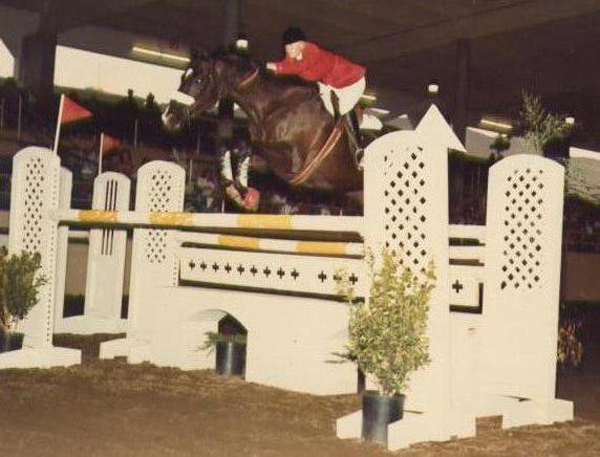
Weigel and Bulletproof showing at the L.A. Equestrian Center in 1982.
About six months later was his big comeback. We hauled to Santa Barbara for the Fall Classic Horse Show at the Earl Warren Showgrounds. I won several preliminary jumper ribbons with my good black horse and by the end of the week he was named champion preliminary jumper out of 60 horses.
I was smiling, with a tear in my eye, as they called out his new name: “Bulletproof.”
I was lucky because I had really good trainers—Jimmy Williams, Bill Herring, Richard Keller. They’d all stand back from him because you never knew when he might squeal and kick out, but they helped me with him. And he loved to show. He’d go in the ring and swell up and try so hard.
Jimmy Williams always said, “If they like to buck, they usually like to jump,” because they have the spring in them. And he was like that.
Our first grand prix was a futures class and it was huge! It was indoors at night and when we walked the course, I’m 5’3” and everything was to my eyeballs. My husband then, Kenny Nordstrom, and Richard Keller helped me and said, “Your blankety blank horse can jump this, just sit in the middle and don’t mess him up.” So I put my hands forward and galloped and he jumped everything like a bird. He was a super horse.
I rode Bulletproof from 1978 to 1995. He jumped hundreds of jumps and years of clear rounds for me and we even won money in a few grand prixs. He always paid his way with his earnings.
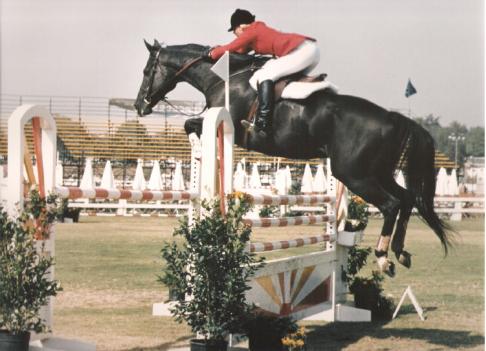
He taught me a lot, and later in his life he taught the junior riders in my barn how to jump and show. (He also tossed everyone who rode him at least once—he never did anything naughty in the show arena but he was a trickster at home!)
He was that one-in-a-million dream horse I was lucky to have. In 1997, he was 22 and ready to go to horse heaven. We still make jokes about him bucking people off up there!
Edee Weigel was a hunter/jumper trainer in California for more than 25 years. She now lives in Huntley, Mont., with her husband Ernie where they run a hay and horse ranch.






